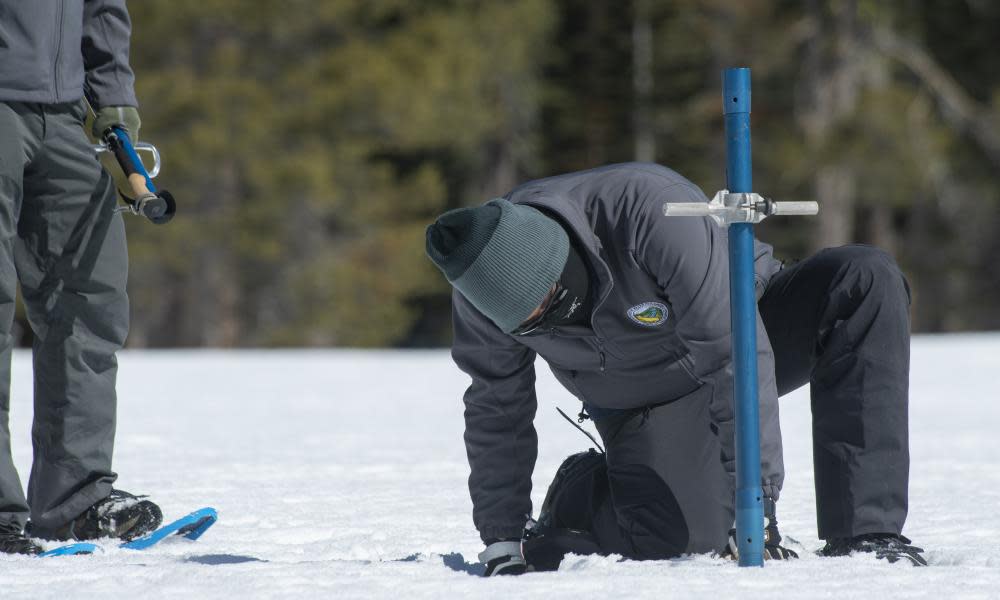California’s snowpack signals another dry year, prompting calls to save water

California will face another critically dry year, and residents will need to adapt quickly to cope with water shortages and a warmer, drier climate that has helped fuel destructive wildfires.
Officials with the state’s department of water resources announced on Tuesday they had found that the water content of the overall snowpack for 2 March amounted to 61% of the average. The state’s largest reservoirs were storing between 38% and 68% of their capacity, officials said, meaning that the state would have a lot less water to carry it through the rest of the year.
“With below-average precipitation across the state, California’s reservoirs are starting to see the impacts of a second consecutive dry year,” said Sean de Guzman, the department’s chief of snow surveys and water supply forecasting.
Related: Biden urged to back water bill amid worst US crisis in decades
“It’s more critical than ever that Californians adopt sustainability, embrace new approaches and emerging technologies and work together to save water for a secure future,” he added.
The Sierra snowpack, which starts building up in the fall, usually supplies about a third of California’s water each year. December, January and February are usually the wettest months – but this year, rain and snowfall at higher elevations have fallen below average month after month.
“Absent a series of strong storms in March or April we are going to end with a critically dry year on the heels of last year’s dry conditions,” Karla Nemeth, the department’s director, said in a statement. “Water efficiency and drought preparedness are more important than ever for communities, agriculture and the environment.”
Lake Shasta, the state’s largest surface water reservoir, was at 50% of capacity, De Guzman said.
The state’s previous drought – which lasted from 2012 to 2016 – resulted in about $2.7bn in losses for the agriculture industry, and more than 18,000 lost jobs, economists estimate. The drought also contributed to the deaths of about 102m forest trees, ecologists found.
Hotter, drier weather fueled by global heating has also contributed to more damaging wildfires. With each warmer year, the likelihood of hotter weather and more extreme drought increases – leaving a landscape that is tinder-dry and more prone to fire. Last year, the state saw five of the six largest blazes on record.

